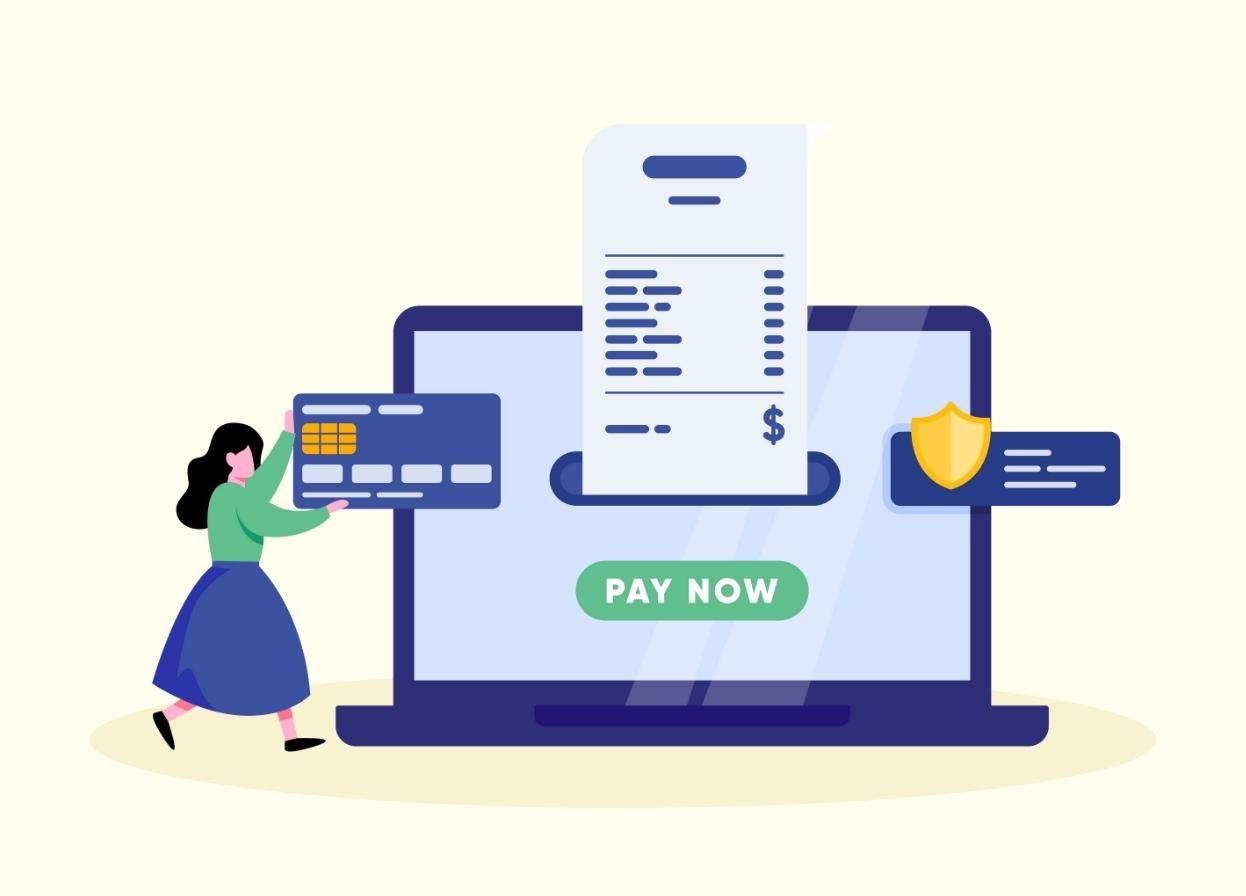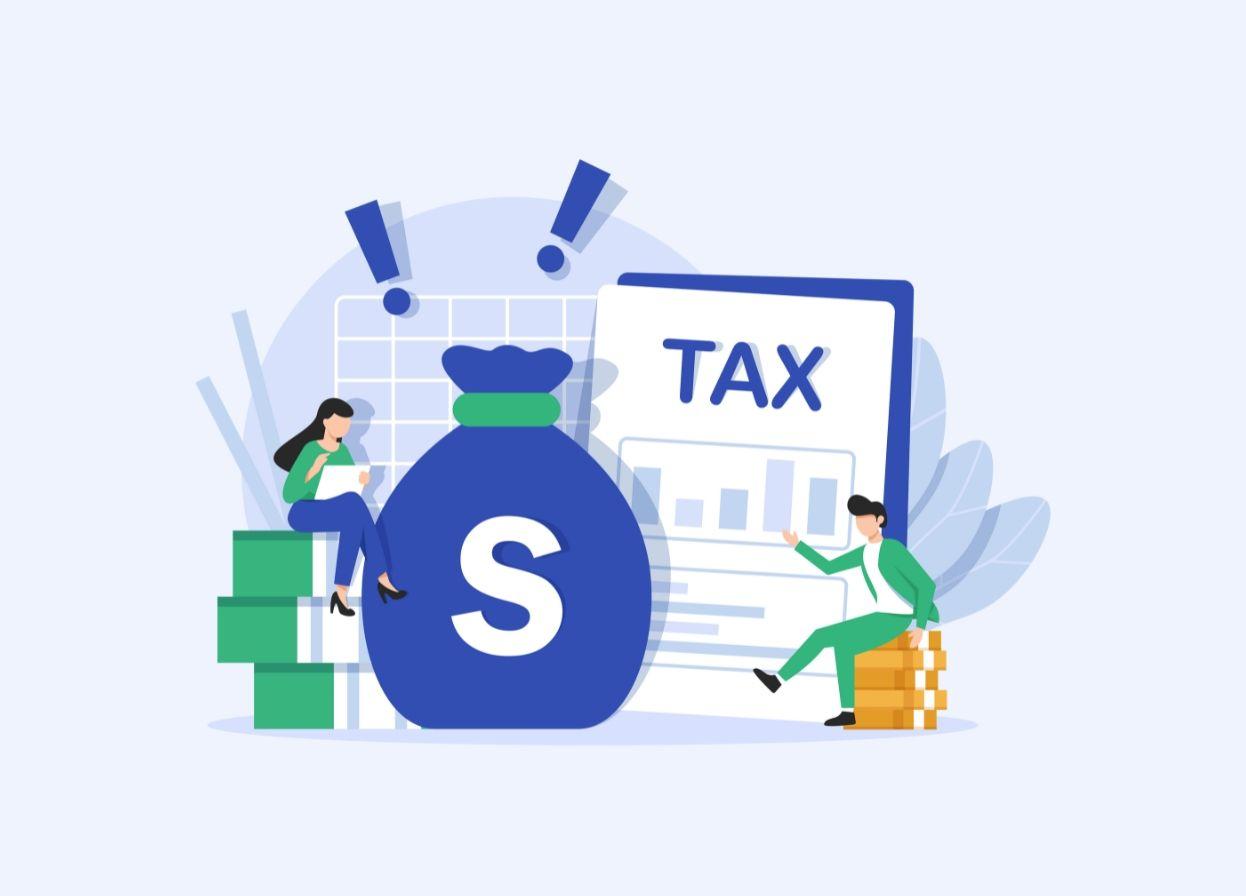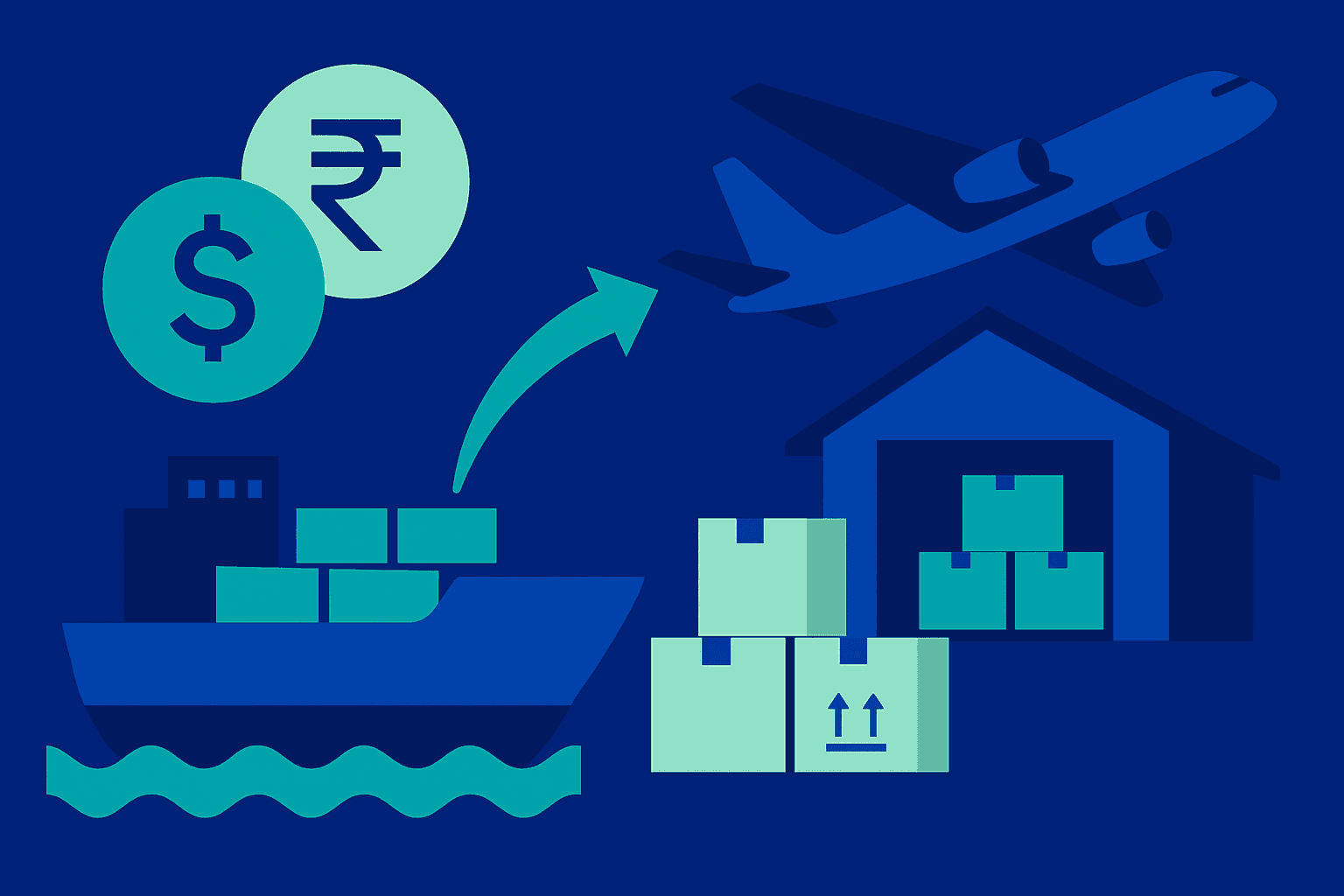Receiving Money From Abroad in India| What You Need to Know

India is seeing a massive surge in foreign remittances, from freelancers working with global clients to families receiving support from relatives abroad. But while sending money is easier than ever, receiving it efficiently, affordably, and compliantly still poses challenges for many.
In this guide, we break down everything you need to know to receive money from abroad in India, covering bank transfers, online platforms, virtual accounts, required documents, tax rules, and the smartest options for your needs.
What Are the Main Ways to Receive Money From Abroad in India?
| Method | Best For | Typical Fees/Markup | Transfer Time | Documentation |
| SWIFT Bank Transfer | Large B2B and export payments, | $15–30 + 1–3.5% forex markup | 3–5 business days | FIRA to be collected from bank at a fee |
| Virtual Accounts (Skydo) | Freelancers, SMBs | $19–29 flat or 0.3% fee | 1–2 business days | Instant free FIRA |
| Payment gateways (Paypal, Stripe) | Freelancers, SaaS, D2C | 3–5% fees + 2–4% markup | 1–5 business days | Paypal: Monthly FIRAStripe: No FIRA |
| Money Transfer Operators | Personal remittance | 1–2% + fixed transfer fee | 24–72 hours | Not applicable |
Bank Wire Transfers (SWIFT)
Bank wire transfers via the SWIFT network are one of the most common ways to receive international payments in India, especially for established businesses or high-value transactions.
Steps to Receive via SWIFT:
- Share bank details: Include your SWIFT code, account number, and bank branch info.
- Depending on your agreement with the sender, they can choose how the transfer charges are split.
- Wait 3–5 working days for funds to arrive.
- Request FIRA from your bank for compliance purposes.
Pros:
- Accepted worldwide
- Works well for large B2B payments
- Familiar process for most corporate clients
Cons:
- Takes 3–5 business days (or more if intermediary banks are involved)
- Charges can add up: sender fee + intermediary fee + receiving fee
- Banks often apply hidden forex markups (1%–3%)
- FIRA needs to be manually requested and may take days
📌 Example Use Case:
A Bangalore-based IT services company receives $150,000 from a U.S. corporate client for a quarterly contract. The client uses SWIFT to transfer funds from Chase Bank to HDFC Bank.
Virtual Accounts (Skydo, Wise etc.)
Virtual accounts offer a modern, cost-effective way for Indian freelancers and businesses to receive international payments. Platforms like Skydo and Wise provide you with local receiving accounts in foreign countries, so clients can pay you like a local.
Steps to Receive via Virtual Account:
- Create a virtual account on platforms like Skydo or Wise.
- Share your foreign account details (e.g., US bank account number and ACH routing number for the US).
- Client pays via local bank transfer, like ACH or SEPA, no SWIFT required.
- Amount is auto-converted and deposited into your Indian account, usually within 24–48 hours.
- Download FIRA or remittance advice, instantly (on Skydo) or with a small fee (on Wise).
Pros:
- Faster settlement (1–2 business days)
- No intermediary bank deductions
- Lower fees than SWIFT
- Real exchange rates (Skydo: live forex rate; Wise: mid-market rate)
- Free or instant FIRA with Skydo
Cons:
- A relatively newer payment method, hence may have lesser acceptability than traditional methods
- It may not suit scenarios where the sender prefers or requires SWIFT transfers.
- Some platforms may have a limit on how much can be received via these accounts
Example Use Case:
A freelancer in Pune provides design services to a client in New York. Instead of using SWIFT, the client pays via ACH using the freelancer’s virtual US bank account from Skydo. The money is converted and settled in INR within 24 hours, with no delays, no hidden forex fees.
Payment Gateways (PayPal, Stripe)
PayPal and Stripe are two of the most popular global payment platforms for freelancers, agencies, and online businesses. They offer simple setups to receive payments from international clients, especially for small-ticket or card-based transactions.
These platforms act as intermediaries; your client pays using their preferred method (card, wallet, bank), and you withdraw the converted amount to your Indian savings account.
How It Works:
- Create a verified business account with PayPal or Stripe.
- Share your payment link or integrate payment buttons on your website.
- Clients pay using credit/debit cards or wallets.
- The platform deducts fees and converts the amount to INR.
- You withdraw the funds to your Indian savings account.
Pros:
- Easy setup for freelancers, creators, and e-commerce stores.
- Multiple payment options: supports cards, wallets, and recurring payments.
- PayPal provides monthly FIRA, but Stripe currently does not offer FIRA for Indian users.
- Ideal for low-to-mid value transactions and subscription-based payments.
Considerations:
- Fees: PayPal charges ~4.4% + fixed fees per transaction; Stripe charges ~4.3% per transaction
- Currency conversion markups may reduce the effective amount received. Paypal levies around 4% currency conversion markup, while Stripe levies 2%.
- Stripe onboarding is invite-only in India; PayPal also has certain features that are unavailable in India
Example Use Case:
An Indian SaaS business uses Stripe to collect monthly subscriptions from global customers, offering seamless card payments and auto-billing. Meanwhile, a freelancer uses PayPal to invoice clients for one-off projects or small retainer work, offering a quick and familiar option for international clients to pay via card or wallet.
Other Methods: Remittance Services & UPI-Based Transfers
Apart from bank transfers, virtual accounts, and payment gateways, there are other ways Indian individuals receive money from abroad, such as cash remittance services (Western Union, MoneyGram) and UPI-linked international transfers.
These methods are typically more suited for personal remittances rather than business transactions.
Key Features:
Remittance Services (e.g., Western Union, MoneyGram)
- Funds can be received in cash or credited to a local bank account.
- Widely used for personal/family transfers
- Quick and accessible, but generally not designed for business use.
UPI-Linked Transfers (via Tie-ups with NRIs or Global Apps)
- Some international platforms are starting to enable UPI-based transfers into India.
- Convenient for low-value personal transfers, with fast settlement.
- Still limited in availability and often lacks compliance support for business users.
Limitations for Business Use:
- No FIRA or GST Documents: These options do not provide Foreign Inward Remittance Advice (FIRA), which is necessary for exporters, freelancers, and businesses to comply with Indian regulations.
- Regulatory Restrictions: Funds received via these methods are treated as personal income. Using them for professional invoices may lead to compliance issues under FEMA or GST laws.
- Transfer Amount Limits: Most of these platforms are designed for small ticket sizes (e.g., under $2,500). Not ideal for recurring or high-value business payments.
Example Use Case:
A student receives ₹25,000 from their parents abroad via Western Union, or an NRI sends a small Diwali gift through a global app integrated with UPI. Quick, simple, but not appropriate for business invoices or export earnings.
Costs, Fees & Exchange Rates
When it comes to receiving international payments in India, the method you choose significantly impacts how much actually reaches your account. Below is a breakdown comparing traditional bank wire transfers, payment gateways (like PayPal, Stripe), and virtual accounts (like Skydo).
🏦 Traditional Banks (SWIFT Transfers)
- Exchange Rate: Banks usually apply a markup of 1–3.5% on top of the mid-market rate.
- Intermediary Charges: Fees from correspondent banks (not always disclosed) can reduce your final payout.
- Receiving Fees: Indian banks may deduct ₹500–₹1,000 to credit the amount.
- FIRA Charges: FIRA isn’t issued by default; you’ll need to request it manually, often at a cost (₹200–₹500).
Typical Scenario: If you’re receiving $5,000, you might lose ₹5,000–₹10,000 in deductions before it hits your account.
💳 Payment Gateways (PayPal, Stripe)
- Transaction Fees: PayPal: ~4.4% + 4% forex markup Stripe: ~4.3% + 2% forex markup
- Receiving Time: 1–5 business days
- FIRA & Compliance: PayPal offers FIRA, but often needs to be manually requested. Stripe does not issue FIRA to Indian users, adding compliance friction.
- Transparency: Fee breakdown isn’t always clear, and the final INR value can be unpredictable.
Use Case: Good for small, frequent payments or client card payments, but costly for large transfers.
🌍 Virtual Accounts (Skydo, Wise)
- Exchange Rate: Skydo: Live mid-market rate with zero markup Wise: Mid-market rate; transparent, low fees
- Fees: Skydo: Flat $19–$29 or 0.3% over $10,000 Wise: Charges per transaction; ~1.5-1.9%
- FIRA & Compliance: Skydo: Auto-generates FIRA for free with each payment Wise: FIRA available for $2.50
- Receiving Time: Within 24–48 hours to your Indian account, faster than SWIFT
Best For: Exporters, agencies, and freelancers who want clarity, savings, and automated documentation.
RBI Guidelines & Tax: What You Need to Know
Whether you're a freelancer, a small business, or receiving money from friends or family abroad, it's important to stay compliant with RBI and Indian tax regulations. Here's what you need to know:
RBI Rules for Inward Remittances
FEMA Compliance
All foreign inward remittances must comply with the Foreign Exchange Management Act (FEMA). The purpose of the transfer (gift, income, business payment, etc.) determines the applicable regulation and reporting requirement.
Remittance Channels
- MTSS (Money Transfer Service Scheme):
This is primarily for personal remittances like family support. Cannot be used for business payments or trade. Max $2,500 per transaction Up to 30 transactions per recipient per year - RDA (Rupee Drawing Arrangement):
Cross-border remittances under the RDA (Rupee Drawing Arrangement) are primarily meant for personal use.
Both the sender and receiver must be individuals, with a few exceptions allowed by the RBI.
Money is credited directly to Indian bank accounts.
There is no limit on the remittance amount as well as on the number of remittances. However, there is an upper cap of Rs. 15.00 lakh for trade-related transactions.
Income Tax Treatment
Freelancers & Businesses
- All income received from abroad for services is taxable in India under the head ‘Income from Business or Profession’.
- You must maintain invoice records and report earnings in your ITR.
- If TDS is not deducted by the client (e.g., under DTAA via W8BEN), the responsibility falls on you to self-report and pay advance tax if applicable.
Personal Gifts from Abroad
- Tax-free up to ₹50,000/year if received as a gift from non-relatives
- Gifts from specified relatives (like parents, siblings, spouse) are fully exempt

Get international bank accounts in 5 mins

Save as much as ₹10 lakh annually with Zero FX Margin

Real time payment tracking and instant FIRA
Who Should Use Which Option?
Freelancers & Students:
Virtual accounts (Skydo, Wise) offer ease, low fees, and instant FIRA.
Small Businesses & Exporters:
Use virtual accounts for routine payments. For very large sums, occasional SWIFT transfers may still be necessary."
Platform Sellers (E-commerce/SaaS):
Payment gateways like PayPal or Stripe are convenient, but plan to avoid conversion markups by withdrawing via lower-cost alternatives or virtual accounts.
How to get paid for freelance work from abroad?
If you’re a freelancer in India, the easiest ways to get paid by international clients are:
- Local account details in your client’s country (fast, low-cost transfers).
- Card payment links for clients who prefer credit or debit cards.
- Bank transfers (SWIFT/ACH/SEPA) as a fallback option.
For compliance, always keep your FIRA as proof of inward remittance.
If you’re a freelancer in India wondering how to get paid from abroad, the simplest way is through local account details or card payment links. Tools like Skydo give you both faster payments, live FX, and instant FIRAs, so clients pay easily and you receive without hidden costs.”
Tips to Avoid Overpaying While Receiving Money from Abroad
- 🧾 Always compare exchange rates: Check mid-market rates on Google. A 1–2% difference adds up fast.
- ⚠️ Capture FIRA early: Don’t delay, banks may slow down FIRA issuance.
- 🔐 Keep docs ready: Bank statements, invoices, and purpose codes help avoid compliance delays.
- 🔁 Use local transfers: Virtual international accounts let clients pay in their local systems, no SWIFT needed.
Ready to Simplify Your Payments?
If you're tired of hidden bank charges, delayed settlements, and chasing compliance paperwork, Skydo offers a better way. With RBI-approved virtual accounts, live forex rates (no markup), and instant, free FIRA for every transaction, Skydo makes receiving international payments faster, cheaper, and 100% compliant.
Whether you're a freelancer, an agency, or an exporter, Skydo helps you bring your payments home without the usual hassle.
What are the limitations on receiving business funds through a savings account?
The limitations include limited business banking features, regulatory compliance issues, processing delays, limited transaction and withdrawal volume and lower interest rates.
If I send money from abroad to a normal Indian savings account, will it be taxable?
How long does it usually take to receive money from abroad in India?
What is the best way to receive money from abroad in India?
Do I need to pay tax on money received from abroad in India?
Can I receive money from abroad in my bank account in India?
Should I Use My Savings Accounts to Receive Money from Abroad in India?












